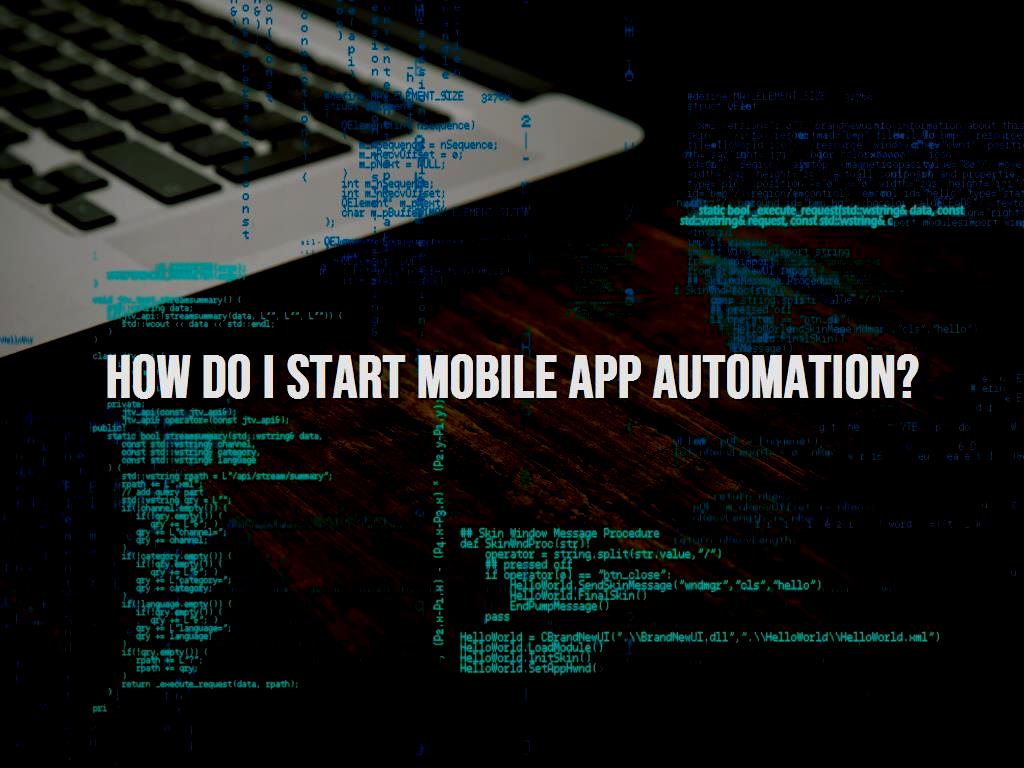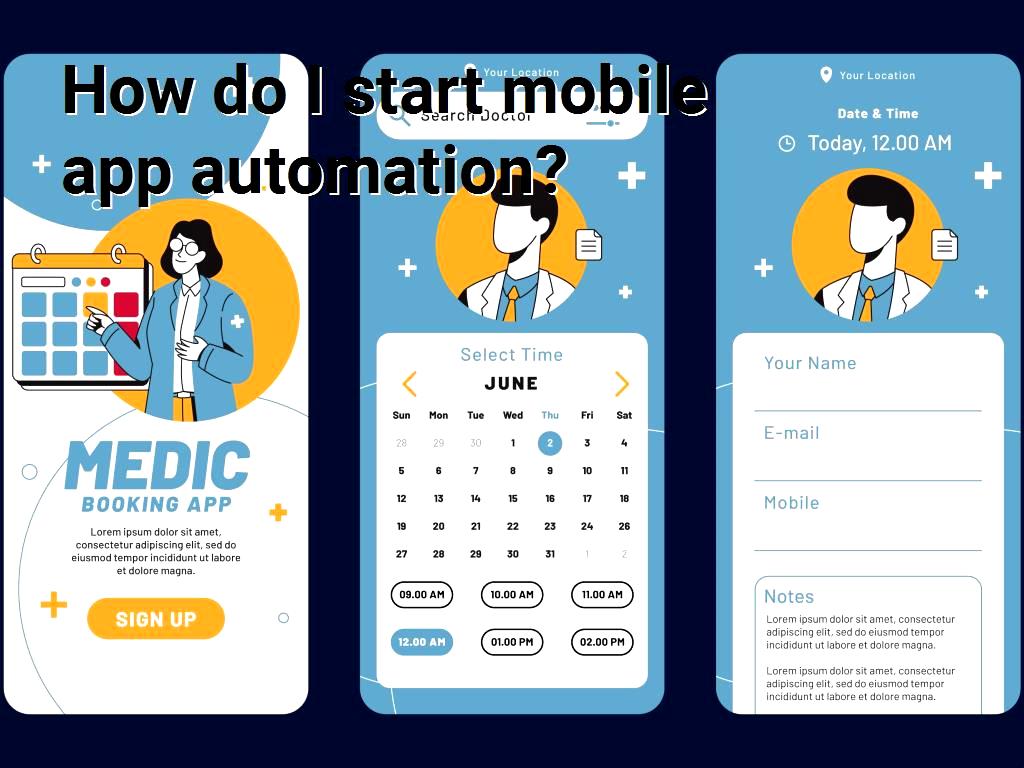How do I start mobile app automation?
9 minute(s) read | Published on: Aug 21, 2022 Updated on: Aug 21, 2022 |
Automation means the implementation of technology-based routines or processes to minimize human intervention. Automation, or as it is called automatic control, may also mean the execution of various operations through a system that works automatically. The term automation first appeared in 1946 in the automobile industry. This is to increase automatic devices and controls in mechanical production lines.
What is automation?
Automation includes all the processes that are carried out in the industry. It uses various technologies from installation, integration and maintenance, design and management, and even marketing and sales tasks, including robotics, expert systems, communication and telemetry systems, process control technologies, sensors, wireless applications, and more.
Automation also includes complex and simple processes. Control systems may operate equipment and machinery in factories, steer and stabilize ships, aircraft, and other vehicles, or operate a large industrial control system based on thousands of measurements, inputs, and control signals. Launch and even control the performance of variable and complex algorithms. As a result, it can be said that it includes all those involved in creating and applying monitoring and control technology for the production and delivery of products and services.

What are the main types of automation?
- Official Automation
It means automating the traditionally manual tasks done by office workers and taking a lot of their time, including arranging meetings, processing invoices, and others.
- Industrial Automation
It means using automation mechanisms at various stages of the production process. Its tools include computers, robots, and expert systems that enable the performance of tasks normally performed by humans, provided that human intervention in Rare cases is like limited cases. Reprogramming machines to suit the new product or solve problems.
- Smart automation
It combines robotic automation processes, artificial intelligence, and machine learning technologies that help automate business processes and accelerate digital transformation.
- Super automation
It means taking intelligent automation to the next level by using all the advanced technologies and creating their full coordination to increase the automation of existing and new processes that were impossible before.
Why is automation important?
The use of automation techniques, mechanisms, and processes improves the efficiency, reliability, and speed of performance of many tasks that humans are used to doing manually. These mechanisms appear in many aspects of our daily lives today, from household appliances such as refrigerators, heaters, and other vehicles, to self-driving cars. But this is not limited to that, as we see it in many sectors such as manufacturing, transportation, services, defenses, and recently information technology.
Automation also helps reduce operating costs by reducing the number of employees needed to perform a task. It also ensures the safety of workers due to the possibility of relying on robots or automatic machines in dangerous places. In addition to increasing the productivity of production lines and factories, the possibility of long-term work without stopping.
Start automating the mobile apps
To start mobile app testing, you need to use a strategy by which the process of app automation will be more straightforward. Here we will mention the steps you need to take before starting app automation.
1. Prepare test requirements
The first thing you need to do before app automation testing is to gather the testing requirements. You need to have a whole strategy plan; otherwise, you can not be able to start your job.
2. Make a plan
In this step, you will clarify the things you will do and the order of doing them.
3. Specify the things that should be automated
When you start automating for the first time, you may do it for all parts, but it is recommended not to automate for the parts that a QA engineer can do.
4. Try to use a system of defect management
In this step, you must define the test repository and assign tasks. Having a defect management system can easily defect issues and finally solve them.
5. Make the analysis part simple
Test reporting tools provide analysis of the testing process with charts and tables that show challenges in the development and testing process.
Automation in website design
In the case of website design and software development companies, automation can be very useful, for example, routine and fixed operations that are performed in website design, such as creating a database, publishing the website from the source code, and transferring it to the host, testing the version. Finally, all steps can be automated, and an employee without technical knowledge can set up and edit a website completely. Also, the procedure known as CI/CD can be considered in the development discussion, which can be done automatically from the development and production of website codes to the final test and release.
All these things can cause a lot of costs, and more importantly, it helps a lot in achieving the best quality of the product or website. The same cost reduction in designing websites and increasing quality can both provide better services to customers and produce products with lower costs. Machine mistakes and the percentage of computer errors are always lower than humans, and it may even be zero when you use automation.
What is automatic app testing?
Automated software testing is a process that uses a tool to test the software to find bugs. In this process, the execution of test scripts and results are generated automatically by automatic testing tools.
When should you use automated software testing?
Re-testing of a tested program after fixing the defects is done to discover any defects that affect the performance of the software. Regression testing is the best option for automatic testing due to frequent changes to program codes, and it is difficult to perform these tests on time.

Magic Quadrant for application automation testing
The Magic Quadrant focuses on automated software functional testing tools. These tools enable an organization to design, develop, maintain, manage, execute and analyze automated performance tests for applications running on different platforms (such as desktop, web, mobile, and server). They can perform automated functional tests by testing an application's user interface (UI) (automated UI testing) or interacting with the application through the application programming interface (automated API testing).
Automated testing tools are essential to achieving a continuous testing approach necessary for DevOps. Continuous testing is running automated tests as part of the software delivery pipeline to get immediate feedback on the business risks associated with the software release.
The automated software testing market includes independent vendors and automated testing products that are part of solutions or portfolios of more prominent vendors. Customers may purchase each automated test product as a stand-alone product. Some of these products have optional and related components, and most offer "free evaluation" or open-source tools, which can make up a significant percentage of the customer's user base. Also, note that many testing service providers have an automated testing offering, although they are not generally offered as stand-alone services.
Over the years, several independent vendors have overtaken the more prominent vendors in this space, demonstrating the importance of automated testing in many enterprise systems. But there are still dozens of independent vendors, new vendors entering the market, and vendors modifying their products to offer advanced automated testing capabilities. Gartner expects the automated testing space to continue to mature rapidly. Over time, this will increase the demand for automated testing across various platforms and technologies.
Open source continues to influence the market. Open source solutions are mainly geared towards developers and focus on web and mobile technologies, making them somewhat specialized and suitable for all testing needs. We expect that most organizations will use more than one solution within the next five years. We also hope open source becomes a core element of an increasing number of cloud-based automated testing services.
CA Technologies
CA technologies that fall into the Visionaries quadrant are based on their vision of DevOps, Shift-left testing, and continuous testing. Its automated testing portfolio has evolved to define the various phases of software delivery, including design, build, test, release, and performance, and supports agile and lean development practices.
CA's automated testing offering, including several products such as CA Agile Requirements Designer for test design and production, Service Virtualization (SV)/CA Application Testing for on-premises testing, and CA BlazeMeter for The test, is based on SaaS. There is an integration with CA Test Data Manager (CA Test Data Manager) for creating and provisioning test data. Test cases can be created with a visual modeling template using different paths, a risk-based approach, or by recording live scenarios. By default, test cases are created manually. But test scripts can be made using configuration files and code snippets for various execution engines, such as CA Application Test, Selenium, Ranorex, or Testplant, as well as the Taurus open source test framework. Integrations with CI tools like Jenkins and CA Continuous Delivery Director coordinate testing and continuous delivery.
CA provides testing using a framework-based template. It supports testing a wide range of technologies, such as desktop, web, and mobile, with the help of CA application testing or by generating automation scripts for supported automation tools and open source frameworks. Tests can be run in cloud environments such as Amazon Web Services, Microsoft Azure, or local machines.
About our Android and iOS app development services